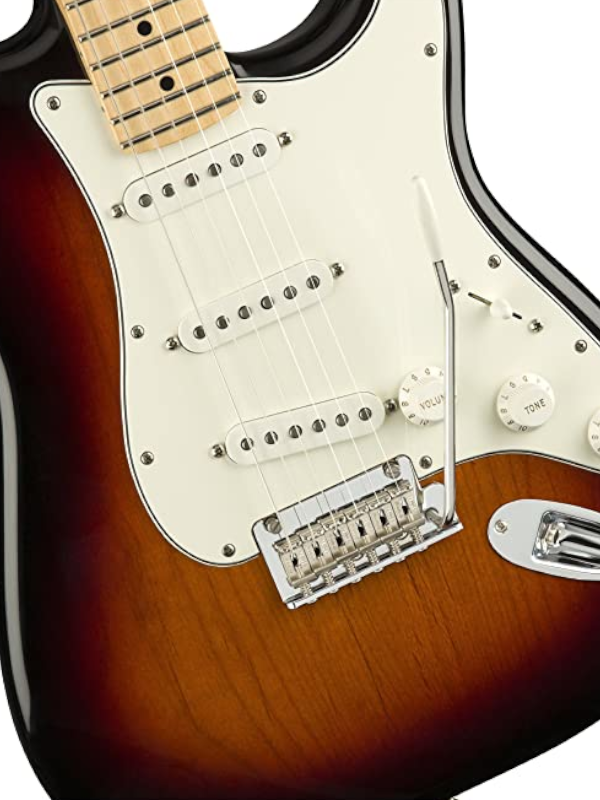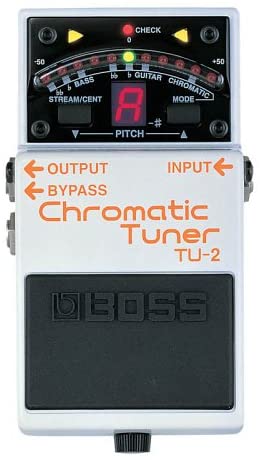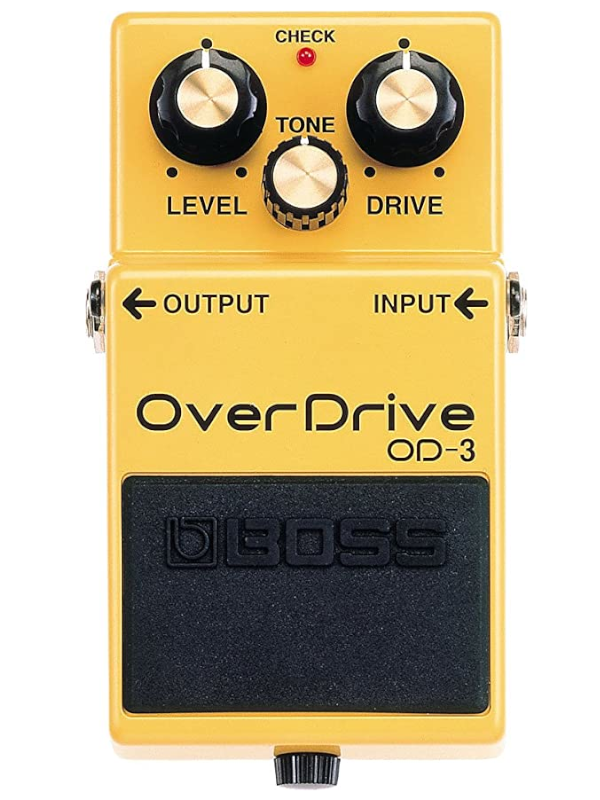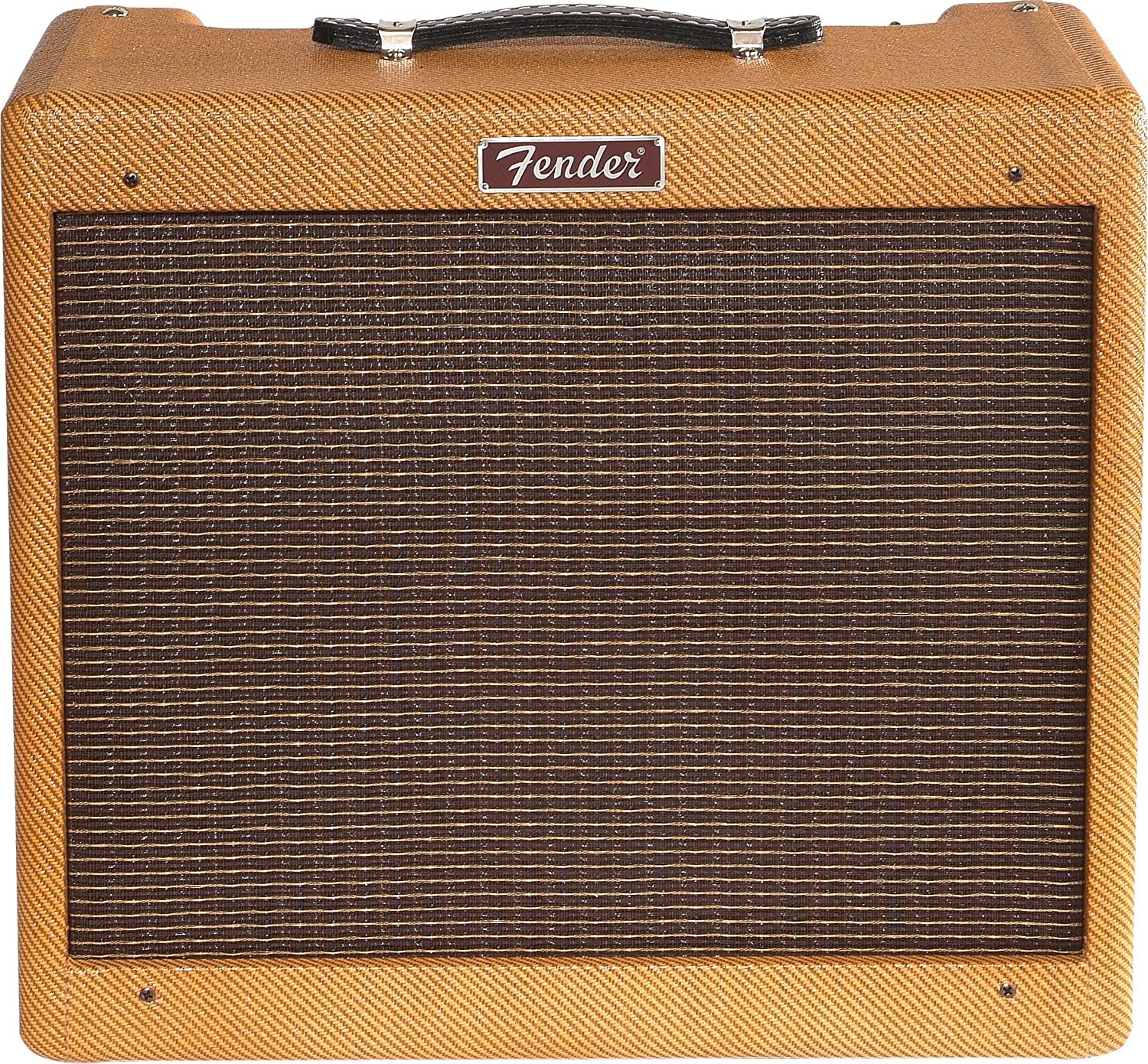Starter Pedals for Electric Guitar
It’s important to assemble a simple, but useful, group of pedals to ensure you can tune your guitar easily and quickly, overdrive your signal for that lovely grittiness.

As you gain more technical skill and confidence playing the guitar, you’re going to want to start thinking about and planning your “rig”, which is musician-speak for the specific combination of gear you use to attain the sound you want when you play. This includes choosing a brand and model of guitar, a brand a model of amplifier, and a couple of pedals that will allow you to model your sound to the needs of different songs or styles.
Electric guitars come in a variety of shapes and sizes, and each one has it’s own unique output signal before passing through your pedal line into your amplifier. So to begin, you want to choose a guitar that is known for sonic flexibility as opposed to super specific pickup and body configurations.
It is also important to assemble a simple, but useful, group of pedals to ensure you can tune your guitar easily and quickly, overdrive your signal for that lovely grittiness, distort your signal for maximum bite and dynamics, and modulate your signal for more tonal variation.

Your Choice
The Electric Guitar
When choosing your electric guitar, it’s good to begin with a tried and true classic brand and model. It doesn’t have to be the $5000 deluxe model, or have souped-up pickups, but there is a reason you see so many Fenders and Gibsons on stage and in music-stores. One reason is that they are used so much more often than others, what you hear a majority of the time are one of the various models from these two mega-brands.
Why? Because the signal these guitars put out are so flexible and various pedal/amp combinations can mold them to thousands upon thousands of different tones. Starting with an affordable Fender Stratocaster, Fender Telecaster, or Gibson Les Paul are great choices when thinking about modifying their sound with pedals and amp combinations.
One of the reasons for their popularity is because they are among the very first mass-produced electric guitars that came to define the sound of popular music in the 20th century. Their popularity also guarantees a reliable product that has been developed and improved upon since the electric guitar’s emergence in the 1950s.
Fender and Gibson also operate sibling companies that produce very affordable models that mimic their fully branded models. Although they are made in different locations and the quality is slightly less than the fully branded models, they are a great alternative for the nonprofessional hobbyist. Because fully branded Fender models are more affordable, we suggest to go with Fender over Squire by Fender. But since Gibson’s are more expensive in general, Epiphones by Gibson are easier to find on Amazon and are very high quality instruments to own.


Boss
TU-2 Pedal Tuner
Let’s face it, Snarks are great for playing around the house and for tuning acoustic instruments in informal situations, but when you’re playing with a group in your garage or on a stage with a band, you not only want a tuner your electric guitar plugs directly into, but also one that allows you to either kill the signal while you tune or bypass and leave the path open for accurate tuning during songs.
These easy to use tuning pedals will get your guitar situated with an easy to read display and extra settings for those of you who like to play at A=438Hz or play along to wonky records, like “Layla” which was tuned to random piano.
Tuning pedals are standardly plugged in via AC adapter, but always carry the appropriate extra batteries, because you never know what the situation will be. Also, in recording situations, batteries are preferred for pedals because it eliminates the possibility of interference noise coming from the AC outlet.
Place your tuning pedal first in your chain, meaning the guitar plus into this first. You want a clean, unmodulated signal to ensure tuning accuracy.


Your Choice
Overdrive
After your guitar is tuned you want a pedal that can boost not just your volume but also the ratio of gain to master volume, also known as overdrive. Overdriving a guitar is the earliest form of manipulating the signal to get a more raw, nasty sound. It predates distortion, but is related to it, and is the result of levying more gain than master volume, literally overdriving the signal.
Having your overdrive pedal second in the chain is a matter of opinion, but we like it here, instead of after distortion, because it has more of an overall effect on the sound when you use both in conjunction. When an overdrive pedal comes after distortion, it only really makes the signal louder. With it before the distortion, it changes the tonal quality of the distortion more noticeably.
Most overdrives have three easy to use knobs that control the amount and sound of the overdrive with: volume/level, tone/body, and drive.


Your Choice
Distortion Pedal
By far the most well-known and popular in the guitar pedal world, distortion changed the world when The Beatles with the help of George Martin harnessed the power of overdrive and signal noise and put distortion on “Helter Skelter”, changing the sound of rock n’ roll guitar forever.
There is a wide variety of distortion pedals for different needs. Some are very general and classic, some address blues rock, metal, or indie rock concerns. No matter what they all use at least a three knob configuration of gain, volume/level, and tone/distortion, but some have six or more knobs for even more sonic control. Putting this after your overdrive increases your sonic flexibility. It’s your best candidate for a third pedal in your chain.


Your Choice
Chorus Pedal
At this point in your rig, you have now satisfied the industry standard pedals, the ones you sort of “need” first in order to build out further. So what comes next? One of our favorite options is to utilize a chorus pedal.
Chorus takes a signal, copies it, and ever so slightly detunes the copy so that the resulting sound has the effect of two or more people singing the same note: a synthesized “chorus” effect. It is famously used (heavily) on the intro of Nirvana’s “Come As you Are”, although it is usually used more in a more subtle way.
Although chorus pedals use different interfaces and different levels of parameter control, they always have depth and rate controls, the two main components of chorus.


Your Choice
Other Pedals
The previous four pedals constitute a tight, but generally standard, rig for your electric guitar. Of course the options don’t end here.
There are reverb pedals, flangers, fuzzboxes, was pedals, and volume pedals, all with their appropriate uses. But those can be considered a more intermediate or advanced pedalboard, one that will involve building your own travel board and case.
We may revisit those in a subsequent article, but in lieu of talking about those we’ll now move on to our last topic: the right amplifier.

A Final Word On This Guide:
As stated at the outset, this is BY NO MEANS a complete overview of the possible types of pedals your rock pedalboard can house, but merely the beginning. There is so much more to explore within and beyond just these three types of effects. But once you have selected the overdrive/distortion, phaser, and delay/echo you like, you can then consider pedals like a wah, an octave pedal, or one that improves upon effects your amp already has like reverb and EQ. The field is wide, now plug in and experiment!

YOUR CHOICE
Electric Guitar Amps
All of this is for nought unless we pick the right amplifier for all this new equipment. Not to crush your arena-rock dreams, but the age of the giant stack amplifier is mostly over (except for tongue-in-cheek pastiche). These days, bands from your corner bar to Madison Square Garden tend to use one or two smaller amps instead of one gigantic 4×4 from the 70s or 80s.
There are all sorts of options, and like with the guitar there are a few very famous brands that get used the most because they came to define the sound of rock ’n roll in the 50s and 60s. They’re not the end all be all and our suggestions here reflect the tried and true as well as a couple of the new funky amps on the market today.
One thing is for sure, you want it to have the right amount of power, and the essential controls without being gimmicky, I mean, that’s why you have invested in a handful of nice pedals, so you don’t have to rely on the digital effects some amps provide. No, instead, a solid, classic amp with decent gain, master volume, reverb, some EQ options, and return and send jacks is all you need to complete your “rig”.
